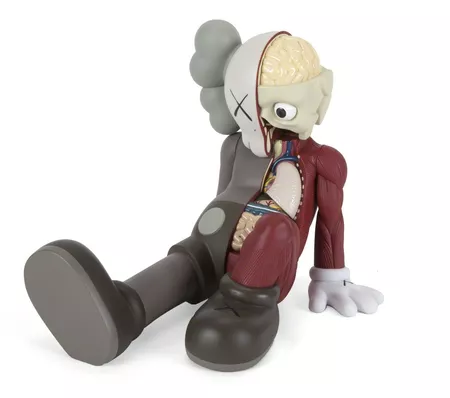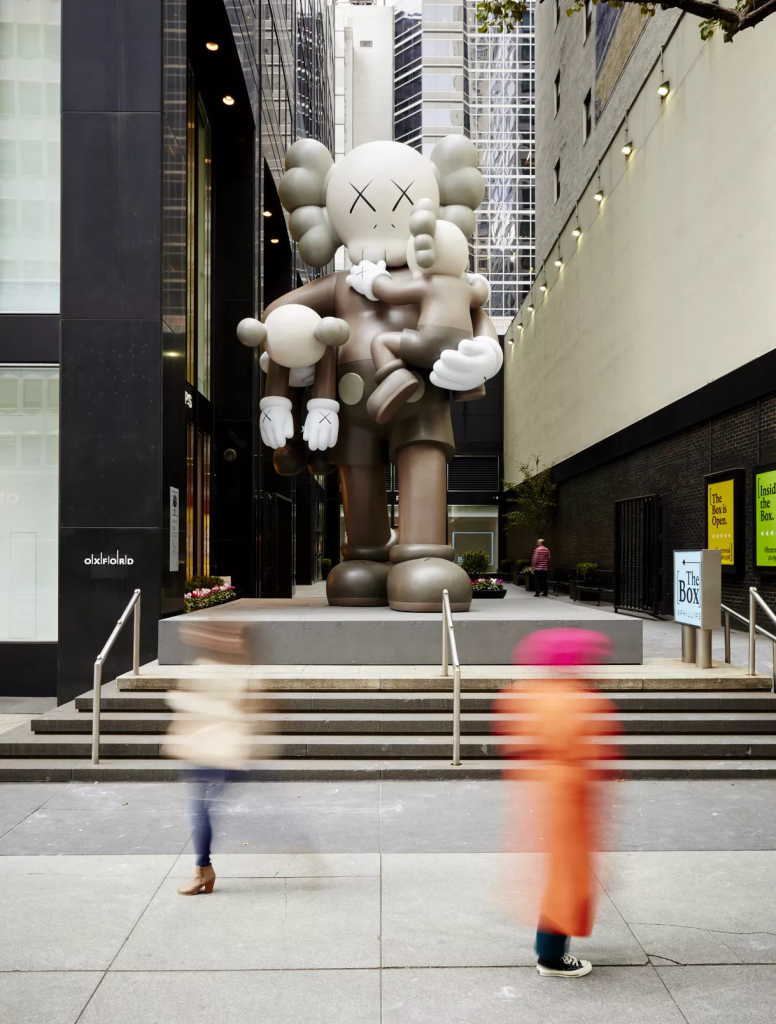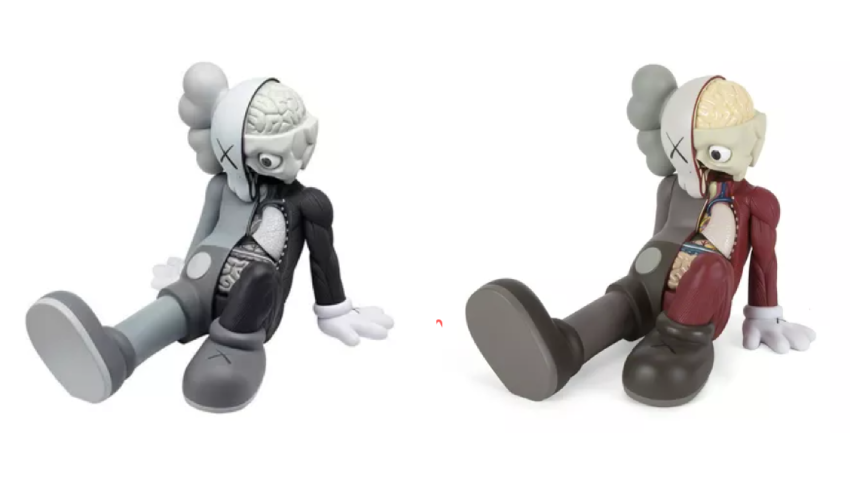Nearly two decades ago, Paul Budnitz was strolling through Tokyo’s Harajuku district when he caught sight of a lengthy queue of Japanese youth eagerly awaiting entry into a diminutive gothic clothing emporium named Bounty Hunter. The establishment was the brainchild of streetwear luminary Hikaru Iwanaga, peddling diminutive plastic playthings reminiscent of those nestled within cereal boxes, exclusively available with a purchase from his boutique. The sought-after trinket, dubbed Kid Hunter, portrayed a roguish pirate figurine, a playful nod to the iconic American cereal character Cap’n Crunch—accessible only to the initiated.
Influenced by his Tokyo encounter and experiences at toy expos in Hong Kong, Budnitz established Kidrobot in 2002. He later divested the company in 2012, resurfacing in 2018 with the launch of another coveted collectible toy venture, Superplastic. Designer toys—frequently crafted from vinyl and drawing inspiration from various pop culture motifs—soared in popularity as the new millennium dawned. Emerging toy enterprises, conventions, and online platforms ignited fervor surrounding a cadre of sought-after artists lending their creative touch. More recently, designer toys have infiltrated the contemporary art sphere, with KAWS (born Brian Donnelly) commanding staggering prices for his creations at esteemed evening auctions, often reaching the million-dollar mark.


KAWS gained renown for his whimsically macabre Mickey Mouse-inspired creations known as “Companions,” which debuted in 1999 and come in sizes ranging from palm-sized to monumental. The demand for these pieces is so fervent that in May 2017, when the MoMA Design Store offered a series of 11-inch-tall vinyl versions of his coveted “Companions” for a mere $200 each, the surge of visitors overwhelmed their website, causing it to crash.
Despite occasional snubs from the traditional art establishment, KAWS found resounding acceptance in the art market in 2018. His works frequently fetched multiples of their anticipated values at auction. In September, at the Phillips “New Now” sale, six 4-foot-tall “Companion” figures sold for two to four times their presale estimates, with a brown colorway leading the pack at $150,000 (inclusive of fees). Two months later, at a Phillips evening sale, the monumental 23-foot-tall fiberglass sculpture “Clean Slate” (2014)—one of just three in existence—shattered the artist’s previous record. Originally expected to sell for $900,000 to $1.2 million, it soared past expectations, ultimately closing at over $1.9 million (inclusive of fees).

What propels KAWS into high demand isn’t solely his famed “Companions,” but rather his extensive body of work, as asserted by Phillips’s head of evening sales, Amanda Lo Iacono. On the same remarkable night that “Clean Slate” found a buyer, his Fat Albert-inspired acrylic painting “Untitled [FATAL GROUP], 2004” fetched a staggering $2.7 million. “I believe it’s the universality of not only his imagery but also his inclusive approach to artistry,” remarked Lo Iacono. “He employs a myriad of materials, delves into subject matter that resonates universally, recognized by anyone globally engaged in visual culture.” Moreover, anyone can possess a piece by KAWS—be it the ardent designer-toy enthusiast acquiring a $200 edition from the MoMA store, or the discerning fine-art collector vying for a grandiose “Companion” at auction.
Though KAWS occupies a distinctive realm bridging two worlds, he isn’t the lone luminary elevating the cultural significance of designer toys. Budnitz’s iconic creations for Kidrobot, crafted in collaboration with artist Tristan Eaton, were enshrined in the Museum of Modern Art’s permanent collection in 2008. Dubbed Dunny and Munny—a bunny and a monkey, respectively—these toys have been personalized by luminaries ranging from the towering “Obey” figure Shepard Fairey to fashion doyenne Diane von Furstenberg, even by esteemed glass purveyor Steuben (their 2-foot-tall crystalline Dunny fetching $21,000). Meanwhile, Munny remains a blank canvas, inviting anyone to imbue it with artistic expression. Other artisans such as Tara McPherson and Frank Kozik have crafted toys fetching thousands of dollars, such as McPherson’s “Lilitu” demon and Kozik’s rendition of Darth Vader’s helmet. The ceaselessly prolific Japanese artist Takashi Murakami has also dabbled in the vinyl toy arena, offering limited runs of his manga-inspired alter-ego Mr. DOB.

The fundamental principles driving the designer toy movement have largely persisted since its inception in Asia during the mid-1990s: conceive a character with kid-friendly appeal, then infuse it with an edgier, more adult sensibility. Subsequently, limit their availability by releasing exclusive editions—making them cherished collectibles. Through toy brands, artists can offer the same character in various sizes, catering to different price ranges: from the standard 8-inch version, typically priced under $100, to the diminutive 3- to 3.5-inch minis, retailing at $10 to $15, and even mystery Blind Boxes, where the exact design is a surprise, available for $5 to $10. Additionally, these artists often produce larger, more elaborate renditions of their characters in materials such as bronze or fiberglass, intended for gallery exhibitions or commissions.
Major toy companies followed the lead of early innovators like Iwanaga and his contemporaries Michael Lau and Eric So, enlisting a cadre of artists to conceive new characters. In 2001, Tokyo’s Medicom Toy debuted the first iteration of the enduringly popular Be@rbrick, a simplified, rotund bear with articulated limbs. The subsequent year, Hong Kong’s Toy2R introduced its counterpart, Qee, a character adopting various animal or humanoid forms. On the other side of the globe, Budnitz established Kidrobot in his California garage, sparking a surge of interest in designer toys in the Western hemisphere. Over the ensuing decade, Kidrobot expanded to seven stores, from Manhattan to Las Vegas to London, with sales soaring from $300,000 to $15 million under Budnitz’s stewardship.

Prior to Kidrobot, Budnitz delved into transforming consumer goods into coveted collectibles through a prior venture involving the customization of Air Jordans, which he then retailed for as much as $16,000 per pair. However, the manufacturing intricacies of vinyl toys, where molds degrade over time, presented an opportune avenue for crafting limited-edition treasures—utilizing plastic kept production costs down and price points within reach for collectors. While certain individual Kidrobot creations have commanded prices surpassing $400, the initial designs ranged from $10 to $100 upon its inception in 2002, a pricing scheme that generally persists to this day.
A decade later, Budnitz divested himself of Kidrobot to redirect his focus towards his bicycle enterprise, Budnitz Bikes. Concurrently, he also established a social media platform for artists, Ello, in 2014. The purchaser, WildBrain Entertainment, disclosed intentions to pivot towards licensed characters, a strategic move that nearly drove the company to insolvency, resulting in the closure of its stores. Subsequently, Kidrobot was acquired anew by National Entertainment Collectibles Association in 2014, with Frank Kozik assuming the mantle of creative lead. However, the repercussions were irreversible: by 2016, the last of its physical outlets had ceased operations. Kidrobot persists in vending collectibles online, encompassing both artist-conceived and licensed toys within its repertoire.

Budnitz, however, made a triumphant return to the toy arena, joining forces with longtime collaborator and toy maestro Huck Gee to unveil Superplastic. This innovative venture churns out exquisitely limited-edition toys crafted by highly sought-after artists. Drained by what he dubbed “instant culture,” wherein product availability peaks, he expressed, “[I] wanted to create items that were palpable, authentic, and imbued with a sense of exclusivity once again. People yearn for things that are not easily obtained and hold a special allure.” Their maiden creation, Janky, embodies a whimsical, fox-like creature, simultaneously exuding charm and an edge reminiscent of the design ethos behind Dunny and Munny.
However, the question lingers: are designer toys truly art? This query has trailed Budnitz from the outset, with his resolute response always being “yes.” He contends that it’s the art realm that needs to catch up—and it’s happening. Budnitz perceives this convergence as fine art and pop culture inching closer together—a transformation akin to the evolution of streetwear into high fashion. He cites luminaries like Eaton, Futura, and Gary Baseman, all witnessing expanded audiences through their foray into toy design. “I believe culture has gravitated towards them,” he reflected. “I reckon it’s partly due to their steadfast commitment. But I also believe culture is now unmistakably aligning with what we’re pursuing, alongside many of these artists.” While KAWS may have nudged the door ajar into the art market, the identity of the next trailblazer remains anyone’s conjecture.








